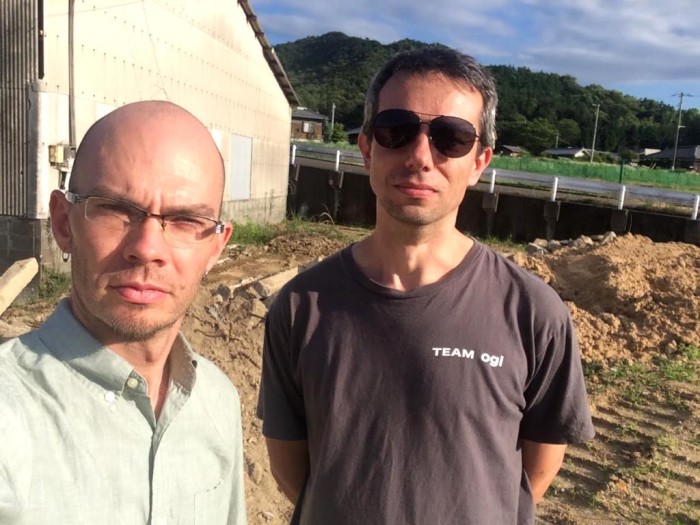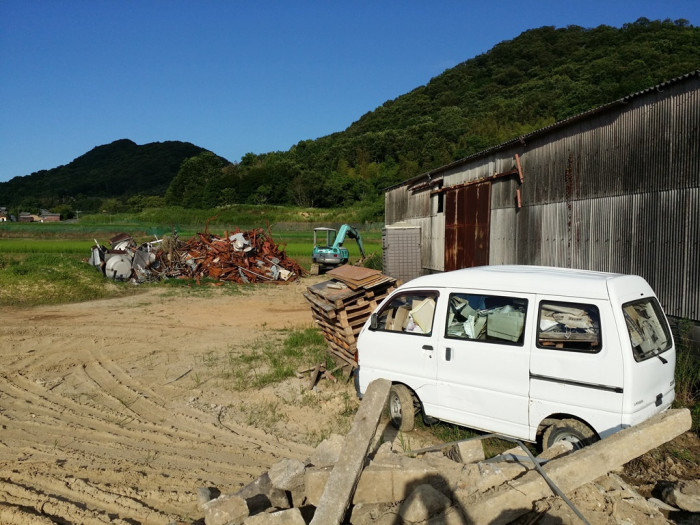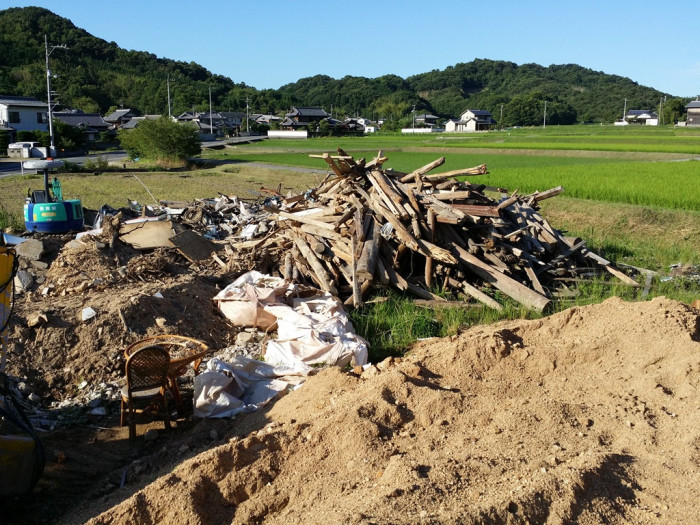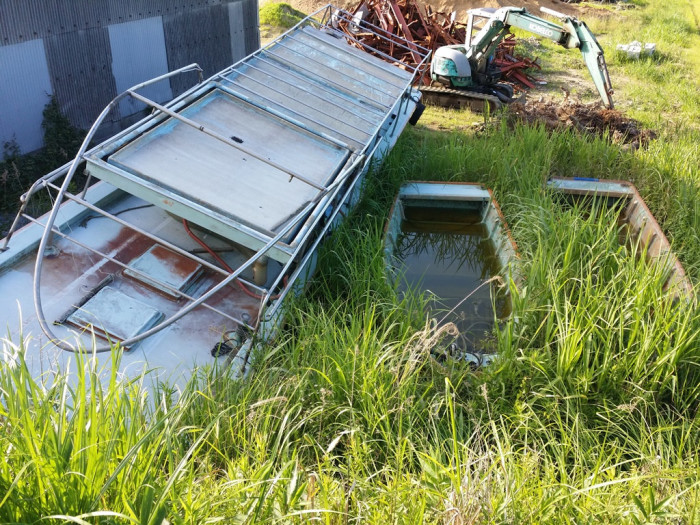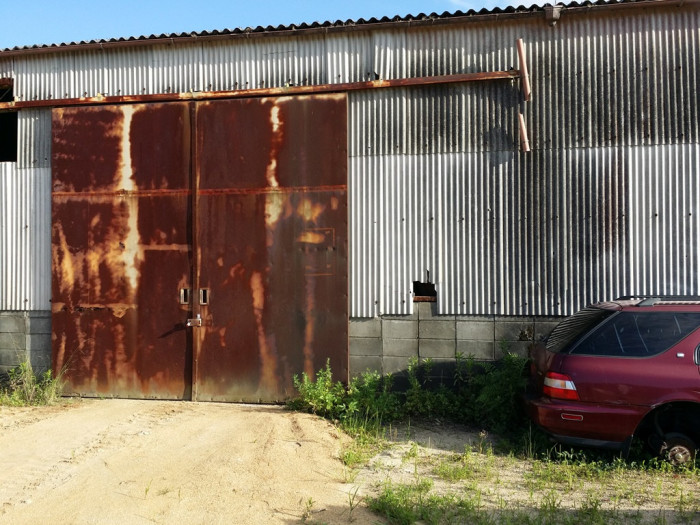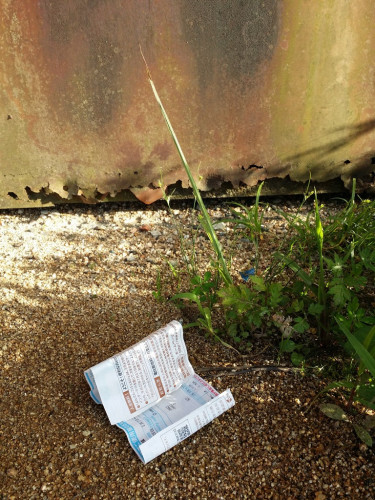All you are about to read is totally factual… or not…
A couple of weeks ago, I had the opportunity to join in on an adventure, a Setouchi adventure. We could even call it a “quest”.
I can’t give you all the details yet, only that it has to do with the Setouchi Triennale 2016 and that the two protagonists of the story were James Jack of Sunset House fame (quick note: after being closed for renovation and construction in the area, Sunset House, will be part of the 2016 Triennale) and myself. There’s a third protagonist involved, but he wasn’t present that day, and he shall remain nameless for the time being.
So, two weeks ago, I met with James Jack near Ritsurin Garden, and we both hopped on my car towards the eastern part of Kagawa. 40 minutes and an ice cream later (vanilla for me, mint for James), we arrived at destination.
Well, it wasn’t that simple.
There was a catch. We didn’t know our exact destination. We were given an address, but none of the electronic tools at our disposition (google maps, yahoo japan maps, my car’s navigation system to name them) could find the precise place we were looking for.
If you’re familiar with the way Japanese addresses work, you know that it’s not always easy to find an unknown location even when you have the proper address, in our case, we were close to the proverbial needle in a haystack.
(if you don’t know the Japanese address system; streets usually have no names, and blocks have numbers basically, but those numbers are not always posted and are not necessarily in order).
To give you an idea, here is the most precise thing we could find (it’s about 2kms in diameter).
We arrived in Okawamacho Tomidahigashi, and started wondering how to proceed next in order to find what we were looking for.
Yes, maybe I should tell you a little bit more about the reason why we went there. Once again, I can’t give you much information. Just know that we were looking for an “artifact” from the Setouchi Triennale 2013, and apparently, it had landed in that part of Kagawa. OK, I’ll give you a little more; I’m talking about a boat!
(if you’re a long time reader – or if you want to go read the posts right now – you know that several boats were mentioned in the blog during the Setouchi Triennale 2013, it is one of those).
So, there we were, in Okawamachi, in the administrative city of Sanuki (“city” in the Japanese sense of the term, we really were in the middle of the countryside), near Tsuda, about 5km from the sea, even though the landscape – tiny plains stuck between hills – made it look like we were much farther inland, looking for a boat that I hadn’t seen in three years and that James had never seen at all. We ignored everything about its current shape. It actually was the main goal of our quest; locate it of course, but also see whether it was in good enough shape to be used the way it was intended to be used… on water… as a boat…
We started driving, not sure where to go, in the middle of the rice fields that started to look good (in this part of Kagawa, rice is planted much earlier than in Takamatsu, no idea why), looking for a clue, a vaguely oblong shape covered by a tarp, something….
Quite early in our search, along the road where we assumed it was located (that’s pretty much the only clue we had on top of that inaccurate address: it was supposed to be on the side of a road), I noticed a bunch of discarded floating devices, the kind of big buoys made of styrofoam or plastic that one finds in local ports and which purpose is to avoid parked boats to bump into each other or into the platforms and piers. A bit strange to find those there… Not really a lead, but that was the only thing vaguely related to boating that we could see.
We drove, more or less randomly, on the small roads (almost paths) between the rice fields, noticed that there too, they had trouble with wild boars, it was not just the islands. Eventually, we decided to ask a random person, after all everyone knows everyone else in the countryside, right? A man was tending his orange trees near us, he’d be that random person.
Not sure what went through his head when he saw two foreigners heading towards him, but he didn’t seem that much phased. Even the fact that James spoke to him in perfect Japanese didn’t seem to surprise him (relieve him if anything). His answer:
“Sorry, but you’re not in Tomidahigashi. Here, we are in Tomidanaka…”
We had driven too far!
Thank you sir, sorry to disturb you and goodbye.
We hopped back in the car, and drove towards the right neighborhood (which really was only a couple hundreds of meters away).
We were going very slowly on one of those very tiny roads zigzagging among the rice fields, hoping we wouldn’t encounter another car – I don’t know how we would have passed each other – when a dog showed up out of nowhere and in the middle of said road. It started walking towards us, calm, almost cheerful. A country dog, most likely walking home after an exciting dog adventure. It stopped in front of us and stood still, forcing us to stop too. No aggressivity in its expression. It even looked as if it was smiling. It resumed walking towards us, still right in the very middle of the road. Soon, I noticed something strange. Right above its eye, a dark protuberance. He got a little closer and then I realized that it was not above its eye. It was its eye! Gouged out, bulging, black, dirty, most likely infected or necrosed. I couldn’t tell if its injury was recent or on the contrary very old. Honestly, I didn’t want to know.
Finally, he moved to the side of the road, letting us go. He kept on looking at us until we were out of sight. It had visibly tried to tell us something, but what?
The road brought us back to an area that was a bit more urban than the rest, and suddenly it dawned to us that there was a place that could give us more information, its unmistakeable logo was right in front of us; the post office!
When James came out of the building, he had some good news and some bad news.
The bad news: we had confirmation that the address we were given did not exist, indeed.
The good news: they had narrowed down the area where the address was supposedly located to just a few blocks instead of those four square kilometers or so, we previously had.
These new pieces of information led us straight to… the junkyard where, earlier, we saw the buoys by the side of the road.
We drove back there to get a closer look at the whole place.
Here is one of the things that I like about Japan. For some reason, I imagined the same scene in the US; entering a private property, even without any gate, even without breaking in, we would have run the risk to be welcomed with a few gun shots in our direction. Even in France, the likelihood of some unleashed dangerous dogs waiting for us was pretty high. Not in Japan. In Japan, we started looking for anything that would like like a wooden boat as we pleased and it was a perfectly safe task.
Suddenly, a vision of horror:
All this wood, these planks, what if it was…?
No, it couldn’t be. We reassured ourselves pointing out various pieces that came undoubtedly from a house and not a boat. While it was good news, it also meant that we still couldn’t find a single trace of the boat.
A few dozens meters up the road, a mechanic was hard at work in his automobile repair shop. He had to know about the junkyard and its owner. He would help us in our quest.
There too, the fact that we were not only in Japan, but especially in Kagawa, helped. In Europe, I let you imagine the reaction a country mechanic would have had seeing two foreigners coming to his place to ask him weird random question about the nearby warehouse. And even in some other parts of Japan, I can imagine the guy panicking, poorly trying to hide it, and saying that he’s sorry but he can’t help us as he doesn’t speak English, despite James being bilingual.
Nothing of the sort in our case.
Sure, Mr. Hashimoto was quite surprised at first, but soon enough he chatted with us as if we were people from just a few kilometers away. Actually, he even was quite interested in our story and very willing to help us.
No, he didn’t know who owned the junkyard, as a matter of fact, he rarely saw anyone there, they must be coming mostly when his garage is closed. Yes, he saw a wooden boat by the side of the warehouse a few months ago, but now it was gone. He couldn’t really remember when it was removed. He was very impressed, and even a bit proud, to be having a conversation and trying to help an artist from the Setouchi Triennale – he even added that he had been to Naoshima, but not to Shodoshima – as well as a…. well, I don’t know how James introduced me, but I’m sure it was very flattering.
He even asked James his phone number in order to call him in case he sees and gets to talk to someone from the junkyard.
After many warm thank yous and good lucks, and an “impromptu” visit from a friend, whom we had seen leaving the garage as we arrived, and who must have suddenly remembered that he had forgotten something (understand: he wanted to check out these two foreigners who were walking to his friend’s – I can imagine that foreigners are indeed more than a rarity in Tomidahigashi and are worth making a detour or lying a little about forgetting something), we headed back to the junkyard to try and find more clues.
Wood, lots of wood, from torn down houses, buoys from a nearby port, a few cars too, some were in pretty good shape, but they were definitely not parked, rather left there… All that and more, but not our boat.
Walking around the warehouse, we did stumble upon a few boats behind the building, which confirmed to us that we were in the right place, but the one we were looking for was still nowhere to be seen. In that case, it was a good thing, those boats were in a terrible shape and were not going to ever be on water again.
What if our boat was in the warehouse?
Of course, it was locked, but the walls were filled with a bunch in various places, which allowed us to peaked through and see parts of what was inside the warehouse.
It was empty for the most part, but there were piles of stuff here and there. Said stuff was mostly wood, but no boat. I’d say we managed to see about 80% of the inside. The boat could be in the remaining 20% that were out of sight, but I’d say it is unlikely.
However, we did manage to find one more clue on the ground:
Thanks to this power bill, we now have the name of the junkyard’s owner – and we also know that power consumption for the past month was 0 yen (no, we didn’t open the letter, as you may know in Japan, power bills are not in envelopes, they are just slips of paper – they’re more receipts than bills really). That and the fact that the piece of paper must have been there for a few days, we also knew that the place wasn’t often visited.
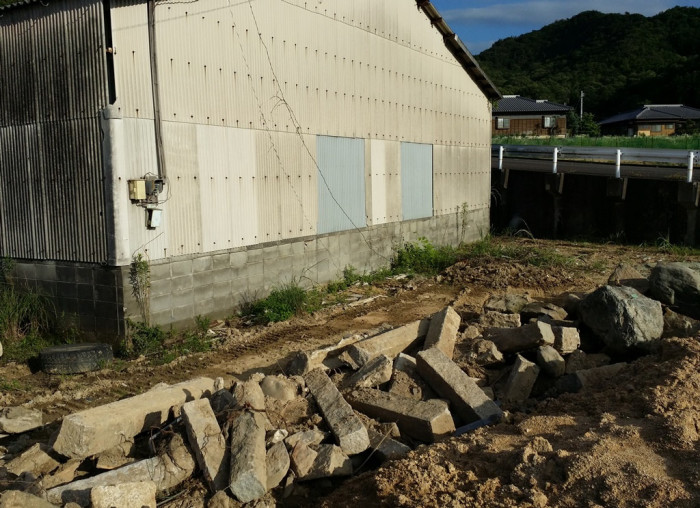
However, it was time to admit that even if we have made tremendous progress in our quest, we have also failed in locating the boat. We have found its former location (why has it recently been moved though?), but that didn’t help us finding its current one. We have the name of the person who had the boat, but I’m not sure we have the means to reach him. We have a “spy” on the ground though, hoping that Mr. Hashimoto will see someone, talk to them and give James a call.
To be continued…. (hopefully)
